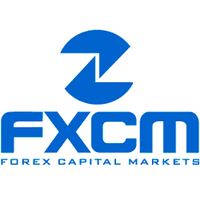Contents
Investing in a full equity index fund gives you an easy and inexpensive way to diversify your US equity exposure. In most cases, the funds require extremely low expense ratios. The Northern Trust Bond Index Fund charges a fee of 15 basis points.
- Its assets are invested in high-yield and emerging market classes, which increases both the risk and potential return.
- The ZERO in the name comes from the fact that it’s a 0-expense fund.
- Schwab US REIT ETF provides access to a broad range of real estate investment trusts stateside.
- The big mutual fund companies carry some of their competitors’ funds, but the selection may be more limited than what’s available in a discount broker’s lineup.
- The real difference is that investor-friendly Fidelity doesn’t have to cough up a licensing fee to use the S&P name, keeping costs lower for investors.
This style of investing is known as passive investing, and the category of mutual funds that follows such a strategy is known as index funds. In contrast to active investing, with passive investing the fund manager does not select stocks of his choice to build a portfolio and does not make any tactical calls. SP Global tracks the relative performance of actively managed funds compared to their respective benchmark across a number of asset classes. Its latest report shows that actively managed funds were more likely to underperform their respective index over one-, three- and five-year periods. Foreign investments are an excellent way to hedge currency risk, geopolitical risk, and gain access to the emerging markets with demographic tailwinds. While there are some risks, it is still very possible for investors to make money from index funds through share appreciation and dividend reinvestments.
No list of index funds is complete without the stalwart S&P 500 index. It is the most popular index to invest in, comprised of the 500 largest American fbs broker reviews companies that make up roughly 82% of the entire U.S. stock market. The historical annualized return of the S&P 500 has been about 10%.
VXUS is an important piece of the Bogleheads 3 Fund Portfolio. Mutual funds are sometimes actively managed, which usually means higher fees. Think of indexing versus stock picking almost like the tortoise versus the hare. Naturally, in doing so, we’re never going to hit a home run. A little speculation/picking is fine to keep things fun, just don’t do it with the bulk of your portfolio. Diversification seems to be the only free lunch with investing.
Where to Buy These Index Funds
Index funds are powerful investments for investors who prefer to invest their portfolios passively. These types of best index funds track a specific market index (like the S&P 500 or the Dow Jones Industrial Average). Finally, we considered each fund’s yield over the last 12 months, the so-called trailing 12-month yield, or TTM. A fund’s TTM yield gives investors a glimpse into the current bond market, something that a five- or ten-year return measure can obscure. The T. Rowe Price QM U.S. Bond Index Fund has one of the highest five-year return of the funds on our list that track the Bloomberg Barclays U.S. Aggregate Bond Index.
.jpeg)
Investing in VTIAX is a great way to add foreign exposure to your investment portfolio and asset allocation. VBTLX only invests in Investment Grade Bonds, which means all their portfolio is rated BBB or higher. The fund has delivered strong historical returns, and you don’t have any of the headaches of managing property. VFIAX is the original index fund created by John Bogle, the founder of Vanguard. It is traditionally Vanguard’s most popular investment product. As of this writing, all Vanguard index funds listed below are currently available for trading.
VIG – Vanguard Dividend Appreciation ETF
Primarily designed for people who already have accounts with the investment company, Fidelity’s Zero Cap Index is similar enough to the S&P 500 for the differences to be mostly academic. However, by not using the S&P trade99 review 500 name, Fidelity avoids licensing fees for themselves and their investors. That’s why we said the differences here are mostly academic. Are they similar enough that they almost always perform similarly over time?
But, while index funds are generally a safe and practical way to invest, that doesn’t mean that all index funds are created equal. Instead of a more traditional investment into From Dummies to Data Structures and Algorithms a single company, investing in an index fund is more like investing in the market as a whole. We also included Fidelity’s ZERO fund, which uses a proprietary Fidelity index.
This is an excellent fund if you want a diversified investment in a broad range of companies and markets. This fund tracks the performance of the Nasdaq Composite Index and includes major positions in several technology stocks. It carries a higher-than-average risk but has delivered strong returns over the years. Like all mutual funds, index funds can add diversification to your portfolio because they invest in many different stocks, often across a wide range of industries. Dividends from stocks aren’t guaranteed, and the stocks themselves can lose value. But they’re a good bet if you’re willing to accept a little more risk for a better rate of return.

The fund began trading in September 2009, and net assets have reached $3.44 billion. Additionally, about half of the businesses are in information technology , followed by consumer discretionary (17.76%), communication (12.79%) and healthcare (11.8%). NerdWallet strives to keep its information accurate and up to date.
In this regard, time is your best friend, because it allows you to compound your money, letting your money make money. That said, narrowly diversified index funds may do poorly for years. Bankrate.com is an independent, advertising-supported publisher and comparison service. We are compensated in exchange for placement of sponsored products and, services, or by you clicking on certain links posted on our site. Therefore, this compensation may impact how, where and in what order products appear within listing categories.
Vanguard Balanced Index Fund Admiral Shares (VBIAX)
Treasury bills are the shortest-term, maturing in one to 12 months. The longest-term are Treasury bonds, with terms as long as 30 years. Longer-term Treasuries offer higher yields because they tie up your money longer at a fixed interest rate. CDs at most banks and credit unions vary from as short-term as three months to as long-term as five years, but some financial institutions offer even shorter or longer terms. If you withdraw it early, the bank typically charges a penalty that cuts into your earnings.
But this compensation does not influence the information we publish, or the reviews that you see on this site. We do not include the universe of companies or financial offers that may be available to you. With supply chain woes expected to persist for some time, the VanEck Semiconductor ETF is only appropriate for investors with a long time horizon and a relatively high risk tolerance. But, with the semiconductor market projected to almost double by 2030, buying this index fund in a bear market could be a smart play for long-term investors. This is a large portfolio of more than 3,000 small and mid-cap stocks, most of which are American technology, financial, industrial, and healthcare companies. This creates a balance between risk and returns for most investors.
.jpeg)
A certificate of deposit, or CD, is basically a fixed-term loan that you make to your bank. You agree to lend the money for a set amount of time, and the bank guarantees you a fixed amount of interest when this term is up. A money market account is a handy place to keep funds you need to write checks from occasionally. For instance, you could write one check on the account each month to pay your rent or utility bills. A money market account is like a cross between a checking account and a savings account. Unlike savings accounts, these accounts generally come with both a debit card and old-fashioned paper checks.
Most of their broad index funds have expense ratios less than 0.10%. In comparing two equal funds, expense ratio is a major factor to consider, as fees can eat into returns. Brokers usually do not disclose their exact sampling methodology, but we can see and quantify the tracking error of index funds, or how accurately they mimic the index. Specifically, tracking error refers to the difference in the net asset value of the fund’s holdings and the value of the components of the index in aggregate.
How We Make Money
Different funds use different indexes to construct their portfolios. That’s a big job—and competing funds deploy a range of strategies to get the job done. When you buy a total stock market index fund, it’s like owning the entire U.S. equity market in a single fund. With those benefits, it’s no surprise that these are some of the largest funds on the market. So anything below the average should be considered a good expense ratio. But it’s important to keep these costs in perspective and realize that the difference between an expense ratio of 0.10 percent and 0.05 percent is just $5 per year for every $10,000 invested.
It doesn’t matter so much if they fall in the short term, and their higher returns give you the best chance of meeting your long-term goals. Many financial experts concur that index funds can be excellent long-term investments. They are affordable solutions for getting a diverse portfolio that provides dependable growth by tracking an index. Like always, be sure to perform your due diligence and research different funds before determining the best index funds for you.
The Best Total Bond Market Index Funds of December 2022
BNDX is the prescribed foreign bond holding in the Bogleheads 4 Fund Portfolio. The Vanguard Dividend Appreciation ETF invests in stocks with a history of an increasing dividend payment that comprise the NASDAQ US Dividend Achievers Select Index . This fund contains a little over 200 stocks and has an expense ratio of 0.06%.
Founded in 1990, the fund’s expense ratio is competitive with other providers, but the $2,500 minimum may be steep for beginning investors. To diversify even further with bonds, investors may opt to go outside the U.S. and invest in foreign bonds. BNDX from Vanguard tracks the Bloomberg Barclays Global Aggregate ex-USD Float Adjusted RIC Capped Index and has an expense ratio of 0.08%.
